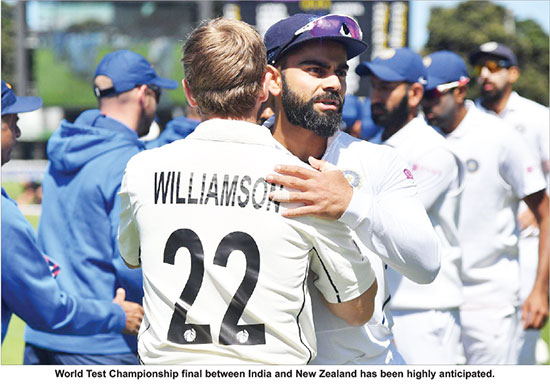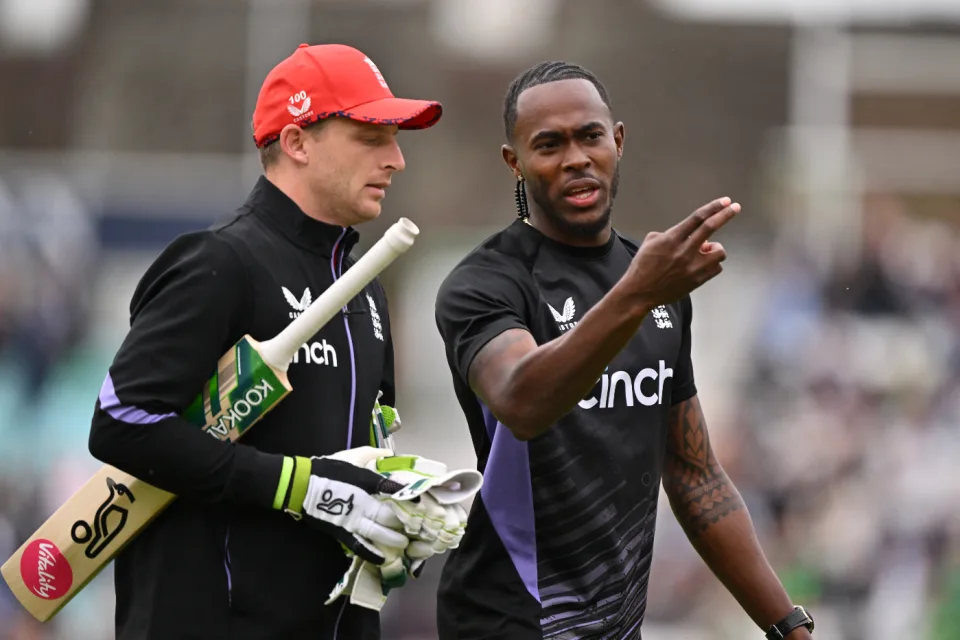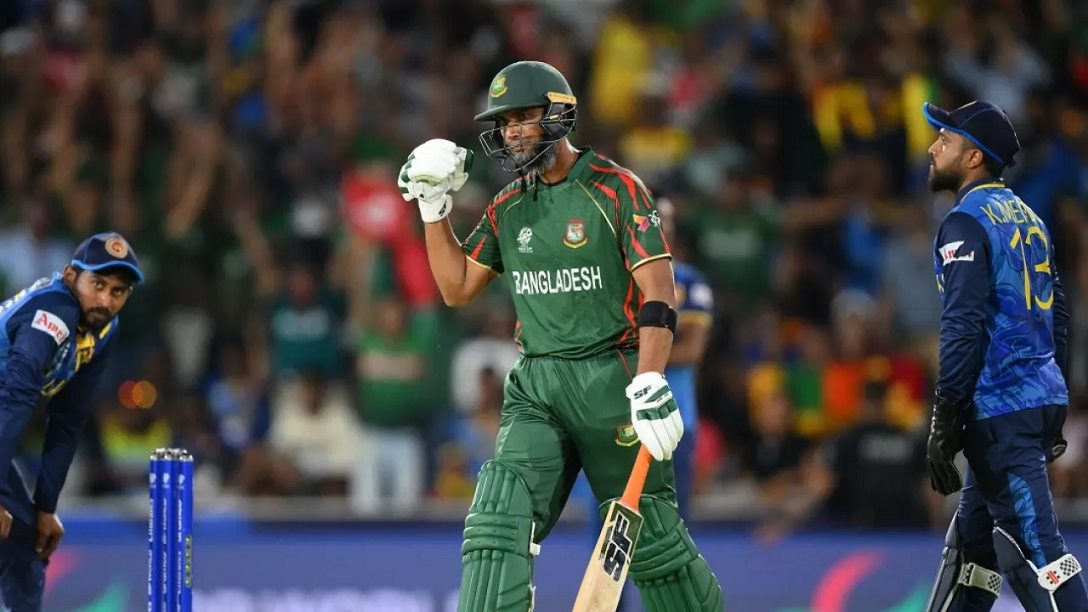Sports
A battle of flare and resilience

by Aravinthan Arunthavanathan
It was a glorious summer evening down under in 2014 December. The Australians breathed a sigh of relief, while the Indian counterparts were left gasping for breath. The stand in skipper had committed the unthinkable. Pulling a long hop straight into the hands of deep midwicket, in the fourth innings of a high-profile Test. That shot could have cost the leadership and may be even the place of the player concerned in the past, but in this case it did not. In fact, it turned out to be a moment which defined the brand of cricket India pledged to play under the leadership of Virat Kohli.
As Kohli walked off the ground distraught, he had lost the battle, but India under Kohli were preparing to win the war. Under Kohli they would not settle for anything less than a victory. The prince waiting in the wings to take over from M.S. Dhoni had walked the talk that day.
Since the turn of 2015, India became an embodiment of excellence driven by aggression. It is no surprise they topped the tables at the end of the World Test Championship cycle. They are an invincible force in their backyard which alone would have guaranteed this place at the start of the cycle. Having seen the way they came back from behind to win the Test series down under in 2020/21, which in fact was rated by ICC as the best Test series ever to have taken place, no one would doubt whether they deserve to be in the finals.
India’s opponents on the contrary are a personification of calmness and values of highest order. If there was a niceness index for overall demeanor, the scale will fail to measure the true value of the Kiwis. But despite being warm in nature, when considering the desire to win they are second to none. Kane Williamson has taken Brendon McCullum’s philosophy forward in his own way.
This was visible in the first Test against England in the recently concluded series. A proactive declaration on the final day with the aim of forcing a result demonstrated what New Zealand cricket is all about. The path of New Zealand to the summit is not as comprehensive as their counterpart’s journey. The highlight is undoubtedly the 2-0 win over India. The series however was closer than what the results suggest.
Mastery of home conditions leading to comprehensive wins against visitors during this period formed the foundation in Kiwis reaching the summit. Two deserved teams with an insatiable desire to win promises, a tantalizing duel in Southampton starting Friday provided a dreaded bubble breach or the English weather do not make an unwelcome entry.
On paper, India should be the favorites on the back of an impressive season, dominated by a great win down under. However, a little bit of reflection will reveal the intricate complexities that can influence the result of this contest.
Both teams are not short of arsenal at their disposal. They are faced with the problem of plenty, especially in the bowling department. The conditions in Southampton will probably provide a perfect balance between bat and ball. With the track routinely having pace and bounce to begin with followed by some degree of wear and tear towards the end combined with fluctuating overhead conditions Southampton promises to be an ideal setting for a high-profile balanced encounter. The swinging ball together with seam has been India’s nemesis. Despite conquering the pace and bounce, India have been exposed in the past when the ball has swung.
The debacle in New Zealand at the start of 2020 is a prime example. How much they have progressed since then is yet to be seen. However at least for the balance of odds India’s coveted line-up is not as strong in England as it is elsewhere.
The Kiwis led by Trent Boult and Tim Southee are masters of swing and seam. Backed by Kylie Jamison and Colin De Grandhomme the Kiwi line-up is well equipped to exploit this weakness in the Indian line up. This duel will be a significant factor in the outcome of this contest.
The Kiwis will be faced with the tough choice of choosing a spinner over most probably Neil Wagner or playing an all-out seam attack. Given the history of the venue and the magnitude of the game, the Kiwis may opt to leave out Wagner and select Ajaz Patel adding the spinning dimension to the attack.
The Kiwi batting line-up in contrast is not the most attractive or celebrated. But there is no doubt regarding their effectiveness. It is a line-up which thrives on resilience than flare. Tom Latham at the top has been consistent across conditions and has been a standout opener in recent times. Kane Williamson and Ross Taylor have struggled in English conditions. With Taylor having an overt deficiency against the incoming delivery, and Williamson not having a good record in England, the Indian seamers would be fancying their chances against the Kiwi batting unit.
The presence of three left-handers in the top order is sure make Ravi Ashwin a trump card. India will not even consider the option of leaving Ashwin out. An inexplicable practice employed in the past to play an additional seamer.
India would look to play Jasprit Bumrah and Ishant Sharma as their lead bowlers. The third seamer’s place will be a toss-up between Mohammed Shami and Mohammed Siraj. While Shami’s experience is invaluable, Siraj has forced into contention with a rapid ascent in stature on the tour down under. Either choice would not have a significant impact as both are extremely efficient.
The threat of Ravindra Jadeja and Ashwin would be a massive threat for the Kiwis. The duo is sure to add value by lengthening the Indian batting line-up too. It is too close to call who has the advantage. The Indian greatness in batting can disintegrate in the face of skillful swing bowling by the Kiwis.
Trent Boult versus Kohli and Rohit Sharma will be riveting duels. Both batsmen would be eager to make amends for their failures in the World Cup semi-final against the same opposition at Old Trafford.
How India’s newest sensations Shubman Gill and Rishabh Pant face their baptism of fire beside the rock solid shielding of Ajinkya Rahane and Cheteshwar Pujara, promises enthralling entertainment. The resilient Kiwi batting can find the high-quality Indian attack too difficult to handle. Ross Taylor overcoming his technical glitch and leading the Kiwis to a world title, first in more than two decades would be a fairy tale ending to one of New Zealand’s modern greats.
Kane Williamson would be more than eager to set his record straight in England and there can not be a better platform than a World Test Championship final. It could go either way. There is absolutely nothing to distinctly differentiate both the teams. Only time would reveal who emerges victorious. India since their 2011 triumph, have experienced a trophy drought despite showing remarkable dominance across formats. The desire for an ICC trophy is on the verge turning into despair.
Kiwis deserve to win at least for the criminal injustice they encountered in the 2019 World Cup final. However, the cricketing world would know the impact of an Indian win in a newly introduced tournament. One need not look beyond the 2007 World T20 see the commercial upside, such a prospect holds. Irrespective of who holds the title at the end of the game, the common fan could be assured that it has all the ingredients to be a battle for the ages.
(The writer’s blog can be found at “Cricketing perspectives” on facebook)
Sports
England face Australia in the battle of champions

The first truly heavyweight clash of this expanded T20 World Cup format comes freighted with both history and subplots. A rematch of the 2010 World T20 final at Kensington Oval, the match pits Jos Buttler’s defending champions – who are aiming to become the first team to retain the trophy – against the Australian winning machine, victors at the 2021 edition and current world title-holders in Test and ODI cricket. And that’s before you throw in the Ashes for afters.
Already there is added pressure on England, after the rain in Bridgetown led to a share of the points in their opener against Scotland (and that having conceded 90 runs from 10 overs without taking a wicket in a tepid bowling display). Lose to their oldest rivals and it will leave their Super 8 prospects open to being waylaid by the perils of net run-rate calculations, or worse.
The Scotland match was the third abandonment in five suffered by England, after a rain-affected home series against Pakistan, which has clearly hampered their readiness for this campaign after almost six months without playing T20 together. It does not take much for a side to click in this format – and England looked in decent shape when they did get on the field against Pakistan – but Buttler will be anxious for things to go their way on Saturday, if only to avoid further questions referencing the team’s disastrous ODI World Cup defence last year.
Australia, under the laidback leadership of Mitchell Marsh would love nothing more than to add to the English sense of jeopardy – having helped bundle them out of the tournament in India on the way to taking the crown. Their head to head record is less impressive in T20 however, with England having won six of the last seven completed encounters, as well as that 2010 final.
Despite a wobble with the bat, Australia avoided mishap against Oman earlier in the week, the experience of David Warner and Marcus Stoinis shining through in difficult batting conditions. Surfaces in the Caribbean – not to mention those games staged in the USA – have already had teams scratching their heads; rather than the “slug-fest” England had prepared for, following a high-scoring tour of the Caribbean in December, it looks as if boxing smart may be the way to go.
Speaking of Warner, this could be the last time he faces up against England in national colours – and another match-winning contribution would likely reduce the chances of them meeting again in the knockouts. On the other side of the card is Jofra Archer, fresh from an emotional maiden outing at Kensington Oval and ready to take on Australia for the first time in any format since 2020. Can Mark Wood fire up England’s campaign, as he did during last summer’s Ashes? Will Pat Cummins be back to harass the old enemy once again? Seconds out, it’s almost time to rumble.
Cummins is set to return after being rested for the Oman game, which saw Mitchell Starc leave the field with cramp. Starc is understood to be fine and could keep his place – which would likely see Nathan Ellis miss out. Marsh is still not fit to bowl, with Australia likely to continue with the allrounder combination of Stoinis and Maxwell to give them cover.
Australia (probable XI): David Warner, Travis Head, Mitchell Marsh (capt), Glenn Maxwell, Marcus Stoinis, Josh Inglis (wk), Tim David, Pat Cummins, Nathan Ellis/Mitchell Starc, Adam Zampa, Josh Hazlewood
The one change England may consider is Reece Topley coming in for Wood, with the expectation that there will be some rotation among the seamers through the course of the tournament.
England (probable XI): Phil Salt, Jos Buttler (capt & wk), Will Jacks, Jonny Bairstow, Harry Brook, Liam Livingstone, Moeen Ali, Chris Jordan, Jofra Archer, Adil Rashid, Reece Topley/Mark Wood
[Cricinfo]
Sports
South Africa up against their bogey team in batter-unfriendly New York

Once is coincidence, twice is a clue, and three times is proof.
To paraphrase Agatha Christie, that is the narrative around South Africa’s meeting with Netherlands at this T20 World Cup.
The Dutch beat South Africa at the 2022 tournament and ended their semi-final hopes in a match where South Africa appeared to be sleep walking, and then beat them again at the 2023 ODI World Cup, where they exposed South Africa’s vulnerability in the chase. If they to do the treble, not only will Netherlands take the lead in Group D, but they will offer conclusive evidence of the threat they pose to Full Members, especially South Africa.
Of course, it will take some doing after South Africa’s opening performance against Sri Lanka, where they reduced their opposition to their lowest T20I total and chased it down in fairly straightforward fashion thanks to the most stable middle-order of their white-ball era. In Aiden Markram, Tristan Stubbs, Heinrich Klaasen and David Miller, South Africa have bankers and big-hitters and, for this match, they also have the advantage of experience. They’ve already played at Eisenhower Park, and have first-hand knowledge that run-scoring doesn’t come easily;Klassen said they are prepared to use their “cricket brains” and play “smarter cricket”.
But the conditions could be good news for Netherlands, who are not naturally a line-up of big hitters and build their innings on a foundation of turning ones into twos. In other words, they tend to take a slightly more conservative approach to batting, which may work well here, but they’ll be wary of the uneven bounce of the surface and will have to come up with plans to counterattack especially against South Africa’s seamers. Their own bowlers were exemplary in Dallas and will look to build on that performance against a line-up that will likely be more proactive than Nepal’s, but who they have managed to keep quiet not once, but twice in the past. Third time’s the charm, they say.
Anrich Nortje’s stunning return to form against Sri Lanka means South Africa may not have to tinker with the bowling combination, and Gerald Coetzee and Tabraiz Shamsi may have to wait their turns to get a game. The batting line-up should be unchanged, with no space for Ryan Rickelton yet.
South Africa: Quinton de Kock (wk), Reeza Hendricks, Aiden Markam, Tristan Stubbs, Heinrich Klaasen (wk), David Miller, Marco Jansen, Keshav Maharaj, Kagiso Rabada, Ottneil Baartman, Anrich Nortje
Conditions in New York may tempt Netherlands to include an extra seamer and they have Kyle Klein in their squad. But it could come at the expense of a shortened batting line-up and they may not want to risk that.
Netherlands: Michael Levitt, Max O’Dowd, Vikramjit Singh, Sybrand Engelbrecht, Scott Edwards (capt, wk), Bas de Leede, Teja Nidamanuru, Logan van Beek, Tim Pringle, Paul van Meekeren, Vivian Kingma
[Cricinfo]
Latest News
Mustafizur, Rishad, Hridoy dazzle in Bangladesh’s tight two-wicket win over Sri Lanka

Nuwan Thushara’s last over brought Sri Lanka screaming back into the match,as he first bowled Rishad Hossain, and then nailed Taskin Ahmed in front of the stumps with a pinpoint swinging yorker. This left Bangladesh eight wickets down, with 12 runs still to get.
However, the experienced Mahmudullah was at the crease for Bangladesh, and despite some further nervy moments, pushed Bangladesh across the line off the last ball of the 19th over.
But this was a match chiefly decided by Bangladesh’s own outstanding bowling. Mustafizur Rahman was the best among them, using shorter lengths and his cutters efficiently, to claim figures of 3 for 17. Rishad Hossain’s three-for through the middle overs also kept Sri Lanka quiet.
Mustafizur was instrumental in Sri Lanka’s downward spiral through the middle overs, which culminated in a crash-and-burn end. Ultimately, their inability to find boundaries, or even rotate strike against good Bangladesh bowling resulted in their downfall. A score of 125 for 9 always seemed poor on a decent pitch, even if their bowlers made a match of it in the end.
Brief scores:
Bangladesh 125 for 8 in 19 overs (Towhid Hridoy 40, Litton Das 36; Dhanajaya de Silva 1-11, Nuwan Thushara 4-18, Wanidu Hasaranga 2-32, Matheesha Pathirana 1-27) beat Sri Lanka124 for 9 in 20 overs (Pathum Nissanka 47, Dhananjaya de Silva 21; Tanzim Hasan Sakib 1-24, Taskin Ahmed 2-25, Mustafizur Rahman 3-17, Rishad Hossain 3-22) by two wickets
[Cricinfo]





















